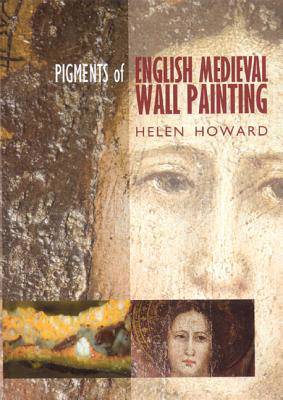
- Retrait gratuit dans votre magasin Club
- 7.000.000 titres dans notre catalogue
- Payer en toute sécurité
- Toujours un magasin près de chez vous
- Retrait gratuit dans votre magasin Club
- 7.000.0000 titres dans notre catalogue
- Payer en toute sécurité
- Toujours un magasin près de chez vous
Description
In Pigments of English Medieval Wall Painting, Helen Howard demonstrates that the techniques of wall painting in medieval England were far more complex than had previously been supposed. This is the first systematic analysis of the pigments employed in medieval wall paintings in northern Europe, covering an extensive selection of schemes from a variety of sites including parish churches, cathedrals and abbeys (Canterbury, Westminster, Norwich, Winchester, St Albans, Sherborne and Durham). The nature and extent of the palette used is revealed as well as the sophistication with which pigments were applied to achieve differing effects. Thirty pigments are detected including four previously unknown in the context of English medieval wall paintings - vivianite, salt green, kermes lake and madder lake. Also discovered are three alterations of pigments: the lightening of red lead; alteration of vivianite to a yellow form and the transformation of verdigris to a blue chloride-based alteration product. The use of different binding media employed for particular pigments in a single paint layer demonstrates the complex manner in which paintings were executed. The findings, discussed in the context of wall painting, sculptural polychromy and panel painting techniques in medieval northern Europe, show the broad chronological development in the choice, fabrication and application of materials linked to changes in artistic intent, technology and workshop practice. Beautifully illustrated with more than 200 colour plates, Pigments of English Medieval Wall Painting has significant implications for the conservation methods of such paintings and is an important source of information for all those interested in pigments and paintings.
Spécifications
Parties prenantes
- Auteur(s) :
- Editeur:
Contenu
- Nombre de pages :
- 356
- Langue:
- Anglais
Caractéristiques
- EAN:
- 9781873132487
- Date de parution :
- 01-05-03
- Format:
- Livre relié
- Format numérique:
- Genaaid
- Dimensions :
- 181 mm x 248 mm
- Poids :
- 1192 g

Les avis
Nous publions uniquement les avis qui respectent les conditions requises. Consultez nos conditions pour les avis.






